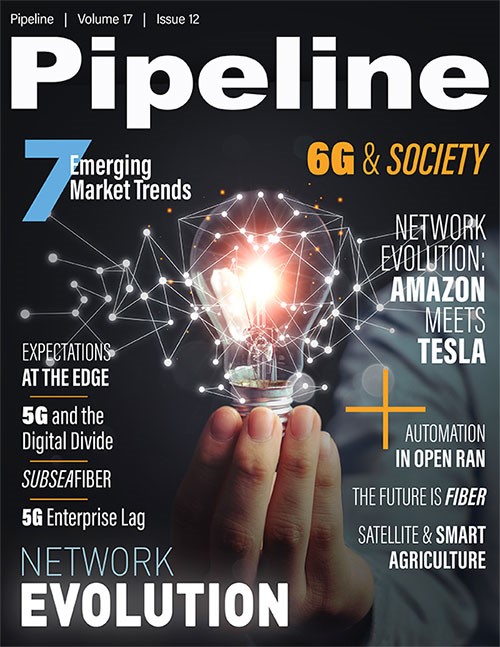Making Smart Agriculture a Reality
with Cellular Backhaul Over Satellite
Leading this innovative use of IoT in agriculture is TIM Brazil, which created the "4G TIM No Campo" project. The project’s main objective is to make digitization possible and to offer innovative solutions for Brazilian agribusinesses. Specifically, the goal is to enable time-sensitive decision-making for better crop management by collecting, transferring and analyzing data bi-directionally between farmers, machines, and administrative offices. The “4G TIM No Campo” solution provides a robust network and cutting-edge infrastructure to connect people, machines and software to analyze all stages of the growing and harvesting processes.
Why is this project so important? According to research by McKinsey & Co., Brazilian farmers are increasingly turning to technology for operations: 85 percent use WhatsApp daily for farm-related purposes. However, the strong digital agriculture presence in Brazil is still challenged by several factors inhibiting adoption. One of these concerns is inadequate Internet connectivity.
In order to make the program a reality, a cellular backhaul over satellite solution was needed to extend 4G coverage to the country. In partnership with TIM, Gilat Satellite Networks supplied 4G backhaul over a multi-spot beam Ku-band satellite to reach Brazil's most remote areas. Satellite backhaul supports the agribusiness IoT market and extends coverage to highways and improves the quality of life of the region’s population by enabling access to pervasive 4G mobile connectivity.
Cellular backhauling over satellite provides the required connectivity to unserved or underserved rural areas and can be deployed quickly to meet time-to-market demands. For satellite backhauling to meet the mobile operator's requirements, the solution must provide end-to-end encryption, maintaining IPSec data security with CMPv2 without compromising performance under fade conditions. Furthermore, the solution should have the flexibility to be configurable for either layer-3 or layer-2 services, thus providing seamless integration to the cellular network core.
Connectivity is essential
The use cases for 4G connectivity vary from providing regular voice, mobile data and IoT services to improving communication between office and field and making onboard computers manage real-time information.
As agricultural production becomes more digitally managed, connectivity becomes essential. Contingency measures must be taken to guarantee the desired SLAs. To address this, TIM uses satellite backhauling in conjunction with landline links to enhance its service.
One example of a farm participating in the "4G TIM No Campo” solution is Citrosuco, one of the largest orange juice companies in the world. The solution expands far beyond the company's groves and will bring connectivity to several neighboring cities, serving an area of 1.9 million hectares. Citrosuco is the first agricultural company to go 100 percent digital and will have the technology in all its farms located in the interior of São Paulo and Minas Gerais.
According to the company, robust cellular technology and backhauling over satellite provide the necessary infrastructure to optimize processing, enable easier decision-making and support all digitalization initiatives. This investment is driving the company to higher operational and sustainability standards.
Another great benefit of the program is the ability to provide 4G coverage at 700MHz to neighboring cities, benefiting thousands of inhabitants of the region where the farms are located.
What’s next?
Two significant trends are emerging that drive the expansion of IoT applications: the surge in private wireless networks and the use of edge computing. As the IoT network connects more devices and technology advances, networks must move to decentralized architectures where processing is being done at different aggregation points. Deploying private networks with edge computing on-premise addresses modern business needs for increased data collection, processing, and real-time analysis.
The satellite industry is bound to play a vital role in the enablement of key IoT applications. With the advantage of ubiquitous reach, reliable and secure communications and quick deployment, satellite backhauling of the cellular network brings great promise to mobile operators.



















